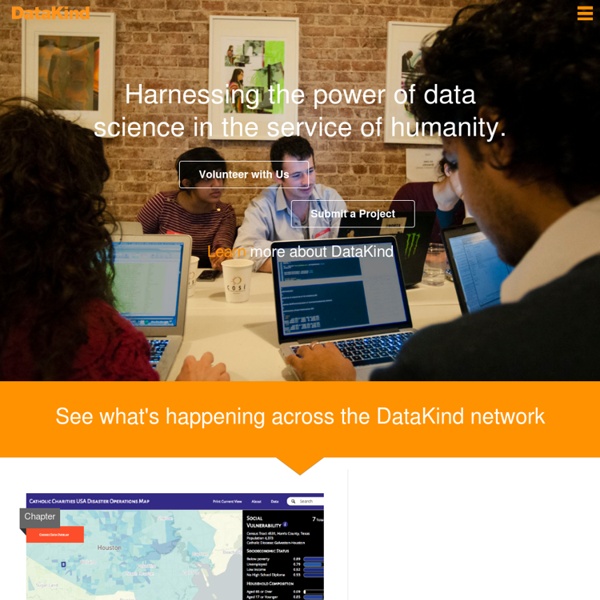



Le livre "L’open data, comprendre l’ouverture des données publiques" (Simon Chignard, Fyp Editions mars 2012, préface de Jacques-François Marchandise, FING) Pour acheter le livre en ligne (sur Amazon.fr), cliquer sur le lien suivant : L’Open data La donnée est au coeur du fonctionnement des institutions publiques, de l’Etat aux collectivités. Elle permet d’aider à la décision, d’évaluer les politiques mises en oeuvre ou de faire vivre les services urbains de notre vie quotidienne (transports, vie culturelle, économie, politique sociale, …). L’open data consiste à mettre à disposition toutes les données publiques numériques non nominatives, ne relevant pas de la vie privée ni de la sécurité. Ce livre montre comme l’open data peut être source d’innovation tant pour les institutions que pour ceux qui réutilisent les données publiques, dans les domaines économiques, culturels et sociaux: comment concrètement initier et animer une démarche d’ouverture de données publiques ? Like this: J'aime chargement…
Crisis Mappers - THE HUMANITARIAN TECHNOLOGY NETWORK About We help individuals and businesses to get, clean, visualise, analyse and manage data from thousands of sources. For science, journalism, lead generation—whatever you need. The magic happens via “tools” running on our self-service platform. But we also offer managed services for corporate customers who want to make the most of their public and private data. Our team Francis Irving CEO A technology leader, Francis created the original TortoiseCVS, which has improved version… More » control for tens of millions of people. Dr Ian Hopkinson Senior Data Scientist 8 years as an academic soft matter physicist, then research scientist at Unilever Plc for 8 years… More » with experience of numerical models, simulations, data analysis, visualisation, image processing using Matlab, R and Python amongst other technologies. Dave ‘Dragon’ McKee Data Scientist Paul Furley Data Scientist Dr Steven Maude Data Scientist Aine McGuire CMO Aidan McGuire Business Development Director David Jones First Engineer Thanks
W3Schools Online Web Tutorials Data journalism at the Guardian: what is it and how do we do it? | News Data journalism. What is it and how is it changing? Photograph: Alamy Here's an interesting thing: data journalism is becoming part of the establishment. Two years ago, when we launched the Datablog, all this was new. Meanwhile every day brings newer and more innovative journalists into the field, and with them new skills and techniques. These are some of the threads from my recent talks I thought it would be good to put in one place - especially now we've got an honourable mention in the Knight Batten award for journalistic innovation. 1. Florence Nightingale's 'coxcomb' diagram on mortality in the army Data journalism has been around as long as there's been data - certainly at least since Florence Nightingale's famous graphics and report into the conditions faced by British soldiers of 1858. The big difference? 2. 3. Sometimes. 4. Read more about this map The datasets are getting massive - 391,000 records for Wikileaks' Iraq release, millions for the Treasury Coins database. 5. 6. 7.
Geeks Without Bounds VIS. Visual Investigative Scenarios platform: Pages Bad Services? Holding Officials Accountable with SMS, Radio, and TRAC FM A recent radio poll at Sanyu FM in Kampala, Uganda, asked listeners what area of service delivery should be a priority: healthcare, education, security, sanitation, or transport. Using a new tool, TRAC FM , the station was able to solicit comments via SMS from listeners, discuss the issue on the air, and create and post online visualizations of the responses. The station received 103 SMS responses which showed that healthcare was the major concern for listeners, which accounted for 65% of responses. With help from Text to Change and in partnership with local media organizations, TRAC FM provides citizens in Uganda with a platform to monitor, scrutinize, and discuss public service issues via SMS, radio, and online data visualizations. According to the TRAC FM website : TRAC works in countries affected by poverty and conflict. The TRAC FM software platform was tested earlier this year with students from the Makarere University Business School in Kampala. Where TRAC FM is Being Used
« Pour faire du datajournalisme, il faut savoir maîtriser Excel » Nicolas Kayser-Bril, datajournaliste chez Owni | Data News Vidéo – Star française du Data Journalisme, NKB répond à Data News pour une interview 75% data et 25% LoL, parce qu’il faut pas déconner, quand même. DataNews : Ca fait un moment qu’on parle du data journalisme et de l’ouverture des données, où en est-on aujourd’hui ? Nicolas Kayser-Bril : L’accès aux données reste très compliqué encore aujourd’hui. Pas mal d’initiatives ont lieu sur l’ouverture des données publiques mais on reste dans une logique très topdown où c’est le décideur qui va gracieusement mettre en ligne cinq ou dix jeux de données. C’est ce qui s’est passé pour l’ouverture des données publiques à Paris où on nous présente quinze jeux de données et on nous dit “voilà on a ouvert !”. Mais avoir le nombre de naissances par hôpital à Paris, ce n’est pas très intéressant. Y a t-il plus de datajournalistes ? Je ne sais pas s’il y a plus de data journalistes. Les grands médias s’ouvrent-ils au datajournalisme ? Tu as vu naître des vocations de datajournaliste ? Non je ne pense pas.
GISCorps - Home Home - schema.org Media And Place (MAP) Productions